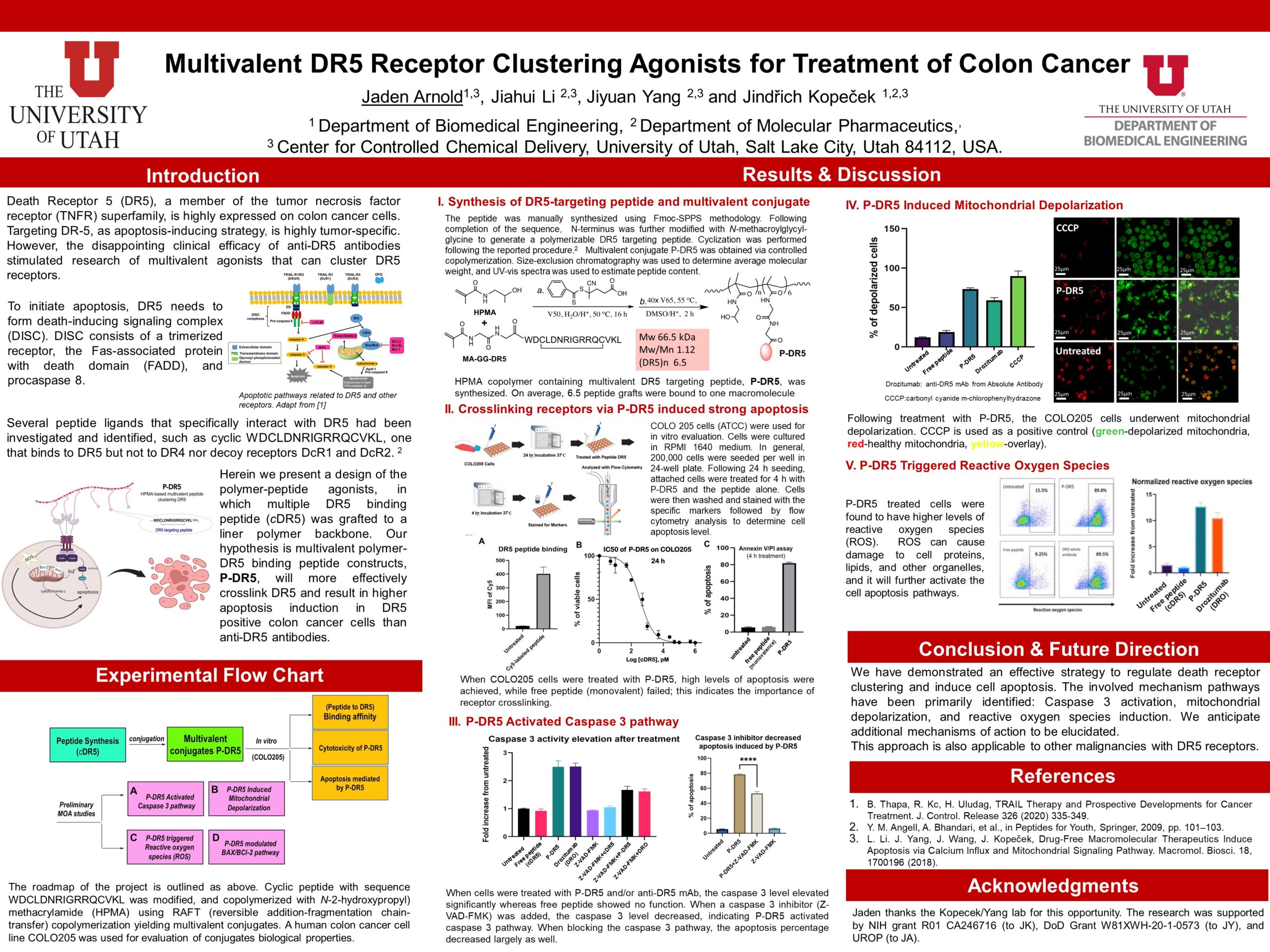Presenter Name: Jaden Arnold
Description
| Death Receptor 5 (DR5), a cell surface receptor, is a member of the tumor necrosis factor receptor (TNFR) superfamily. It is expressed on cancerous cell types of colon, breast, and pancreatic cancers and rarely on healthy cells. The binding of ligands to DR5 induces receptor oligomerization, formation of DISC (death-inducing signaling complex), and activation of procaspase 8 followed by activation of executor downstream caspases 3 and 7. Trimerization of DR5 is needed to form a functional death-inducing signaling complex (DISC) and caspase 8 activation. The disappointing clinical efficacy of anti-DR5 antibodies stimulated research of multivalent agonists that can cluster DR5 receptors. Our design of a new member of the Drug-free macromolecular therapeutics (DFMT) system is based on water-soluble polymeric carrier, N-(2-hydroxypropyl)methacrylamide (HPMA) copolymer, and a DR5 binding peptide. In the first validation of the concept, we synthesized HPMA copolymer grafted with multiple copies of DR5 binding peptide (cyclic WDCLDNRIGRRQCVKL) and demonstrated the efficiency of the multivalent conjugate in apoptosis induction in human colon carcinoma COLO205 cells. The polymerizable derivative of the DR5-binding peptide, MA-GGWDCLDNRIGRRQCVKL (MA is methacryloyl) was synthesized by solid phase peptide synthesis and the manual Fmoc/tBu strategy using Rink Amide resin. It was copolymerized with HPMA using RAFT (reversible addition-fragmentation chain-transfer) copolymerization yielding a multivalent HPMA copolymer-DR5-binding peptide conjugate (P-DR5: Mw = 66.5 kDa; Mw/Mn = 1.12; 6.5 peptides per macromolecule). Apoptosis initiation in COLO205 cells was evaluated in cell culture. P-DR5 induced 80% apoptosis. The mechanism of apoptosis involved the extrinsic apoptotic pathway as demonstrated by the determination of activation of caspase 8 and caspase 3, ROS (reactive oxygen species) formation, and mitochondrial depolarization. In conclusion, the data clearly indicate the importance of multivalency in apoptosis induction mediated by DR5 receptors. The efficacy of P-DR5 is of value since it demonstrates that the DFMT concept could be also applied to solid tumors. The research was supported in part by UROP Fellowship (to JA) and by NIH grant RO1 CA246716 from the National Cancer Institute (to JK). |
University / Institution: University of Utah
Type: Poster
Format: Virtual
Area of Research: Engineering
Email: u1172058@utah.edu
Faculty Mentor: Jindrich Kopecek

